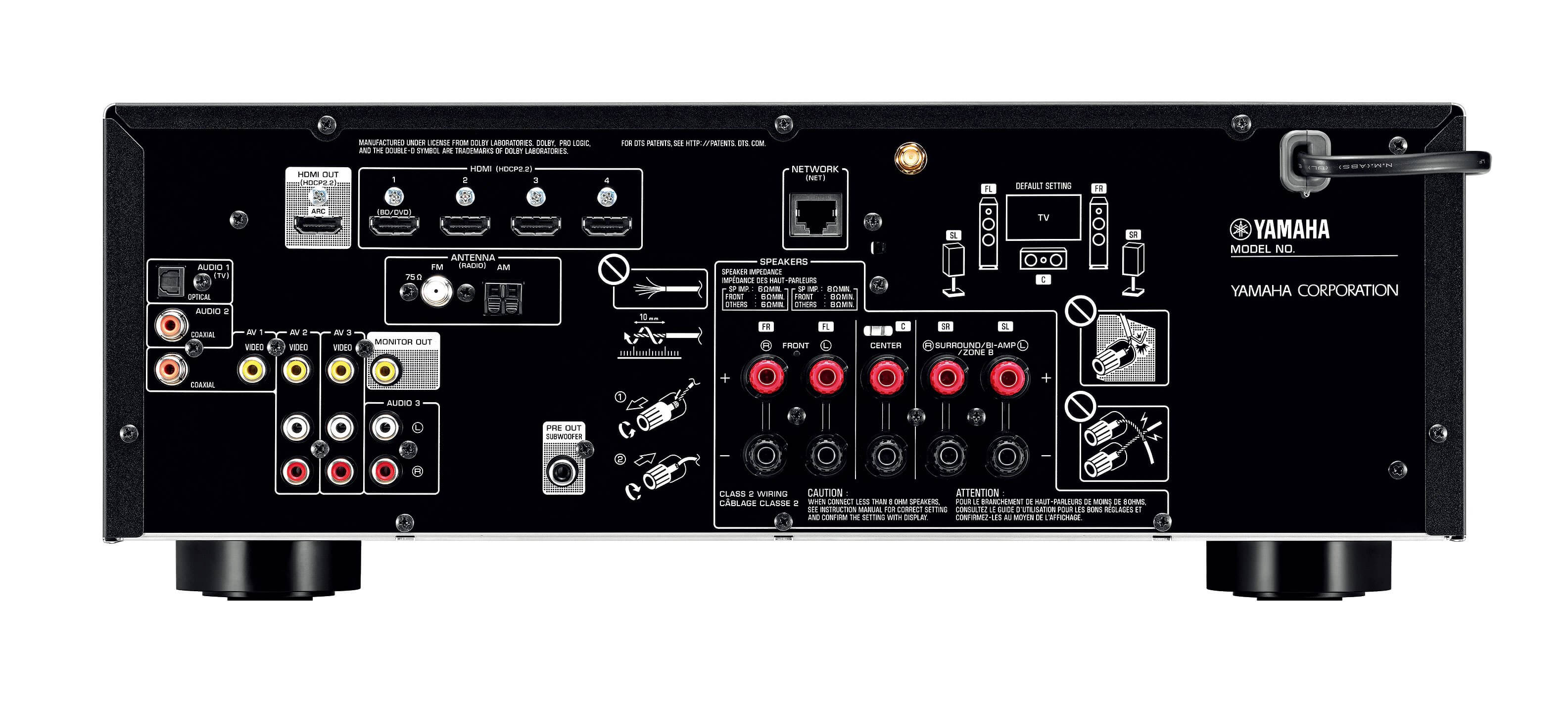Is it possible to watch TV and listen to music simultaneously through your AV receiver? Yes of course. There are two ways to do it. One is much simpler using built in functionality through your receiver while the other requires a HDMI splitter workaround to select a different audio source.
AV Receiver with Built-in Video Out
The easiest way is to get a audio/video receiver that has this functionality already. Yamaha home theater receivers have a built-in function called “Video Out”, which is applicable to audio sources, like AUX, bluetooth, tuner, or USB. This means you can select a video source to display on your TV while listening to your music, podcast, or any different audio source you have hooked up to the receiver. We recommend the RX-V4A as a great entry level home theater receiver. If you have a Roku or Fire TV streaming device connected to any of the HDMI or AV ports, then you can select that video out port for your video source, thus allowing you to watch TV and listen to music at the same time.
Using a HDMI Splitter or Getting a Second Streaming Device
HDMI Splitter
Without the Video Out feature in your receiver, like the SONY STR-DH590, you will need a HDMI splitter like Rocketfish 2-Output HDMI Splitter. This splitter is capable of 4K video resolution, HDR output and is HDSCP 2.2 compatible, giving you the perfect option to split your 4K signal. Now what you’ll do is plug both the output from the splitter into your AV receiver HDMI inputs, one into your “primary” HDMI input, one into another HDMI input which we’ll call the “secondary” input. Make sure you remember the name of the secondary input. It doesn’t matter what it’s labeled on your receiver. By hooking up your entertainment system this way, you can still watch and listen to your TV by using the primary input.
For watching TV and listen to music at the same time, you’ll switch to the secondary input. For example, the secondary output might be plugged into secondary HDMI input labeled SAT/CATV. Then plug your audio source, like CD player or Echo Dot into the SAT/CATV analog or digital input. In your receiver settings, you should be able to assign the audio source for SAT/CATV as analog or digital coaxial or optical, whichever one is connected to your audio source. Now when you switch to your secondary HDMI port, you can still watch TV, while the audio is coming from your different audio source, thus allowing you to watch TV and listen to music simultaneously.
Second Streaming Device
Much like using the splitter, you can also get around the problem by using a second streaming device or stick without purchasing a splitter. Streaming sticks are very inexpensive these days so this is more economical. You can get a Fire TV Stick Lite or Roku Express for $20-$30. However, you’ll have to keep track of which one you’re using and operate another remote.
Just like the splitter method, plug in the second streaming device into another input on your receiver. Then reassign the audio source of that input in your receiver to which ever audio source you would like to play CD, AUX, coaxial or optical. The options are available depending on your receiver. Check the manual for detailed instructions.
While this method is more cumbersome, it does work and should work with all models of AV receiver that doesn’t have a built-in video out functionality for audio only sources.




